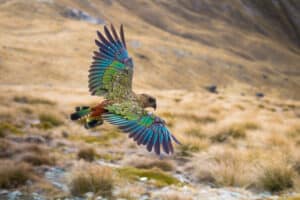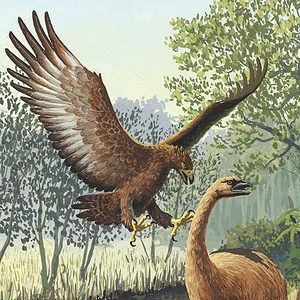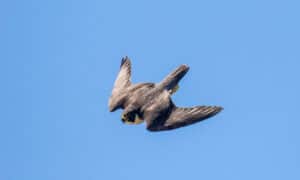Hummingbirds (Trochilidae) are a family of over 360 small iridescent birds all native to the Americas. These tiny flying jewels range as far north as Alaska and as far south as the tip of South America and most everywhere in between, including the United States.
While hummingbirds are found across the U.S., they are usually only seen during breeding and migration seasons in many areas. However, there are some regions where hummingbirds are regularly spotted year-round, even in winter! Read on to find out where you can still see hummingbirds in the U.S. in February.
The Pacific Coast States
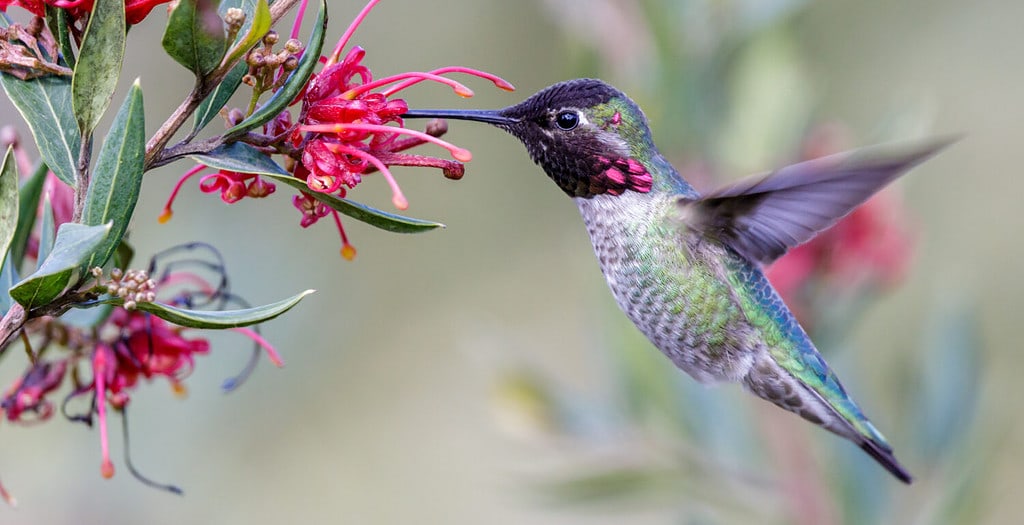
Anna’s hummingbirds are either short-distance migrants or permanent residents across their range.
©yhelfman/Shutterstock.com
Anna’s hummingbird (Calypte anna) is a year-round resident species of California, Oregon, and Washington. Additionally, both Costa’s hummingbird (Calypte costae) and Allen’s hummingbird (Selasphorus sasin) overwinter in parts of Southern California.
The Southwest
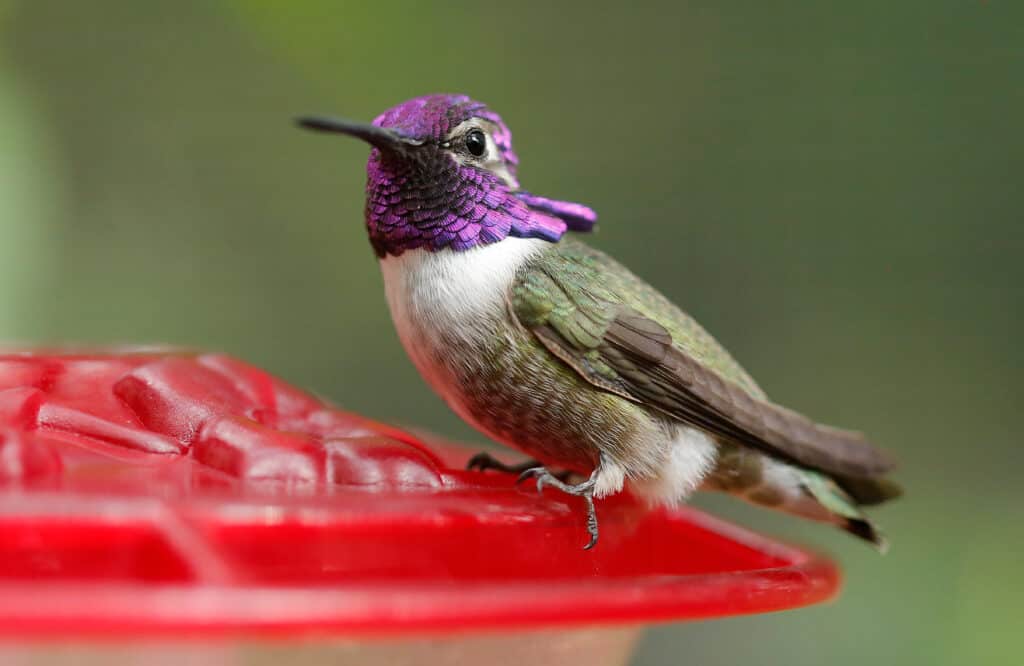
Costa’s hummingbirds are year-round residents in southeastern Arizona.
©Rick Scuteri/Shutterstock.com
Hummingbirds fly year-round in parts of the Southwestern U.S., especially in southeastern Arizona and close to the U.S.-Mexico border in Arizona, New Mexico, and Texas. In addition to such resident species as Anna’s Hummingbird and Costa’s hummingbird, breeding season may start as early as February for some returning migratory species.
Nevada
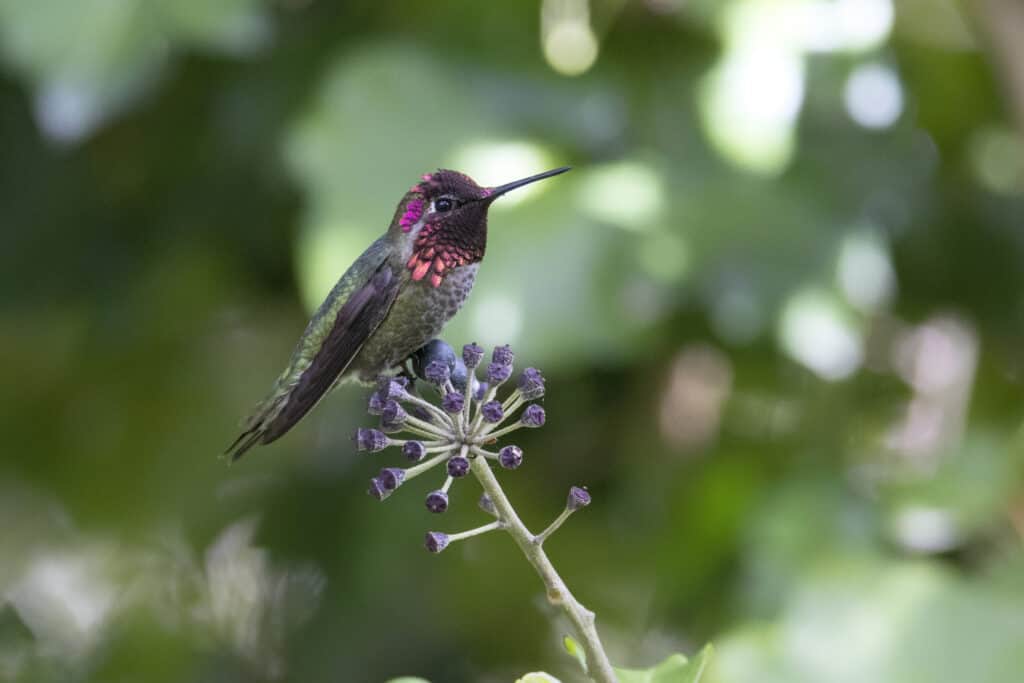
Anna’s hummingbird is the only hummingbird species that regularly overwinters in Nevada.
©Devonyu /Shutterstock.com
Besides making their home across much of the two previously listed regions, Anna’s hummingbird also spends the winter in Nevada. They are most likely to be seen in the far western and southern portions of the state.
The Gulf Coast
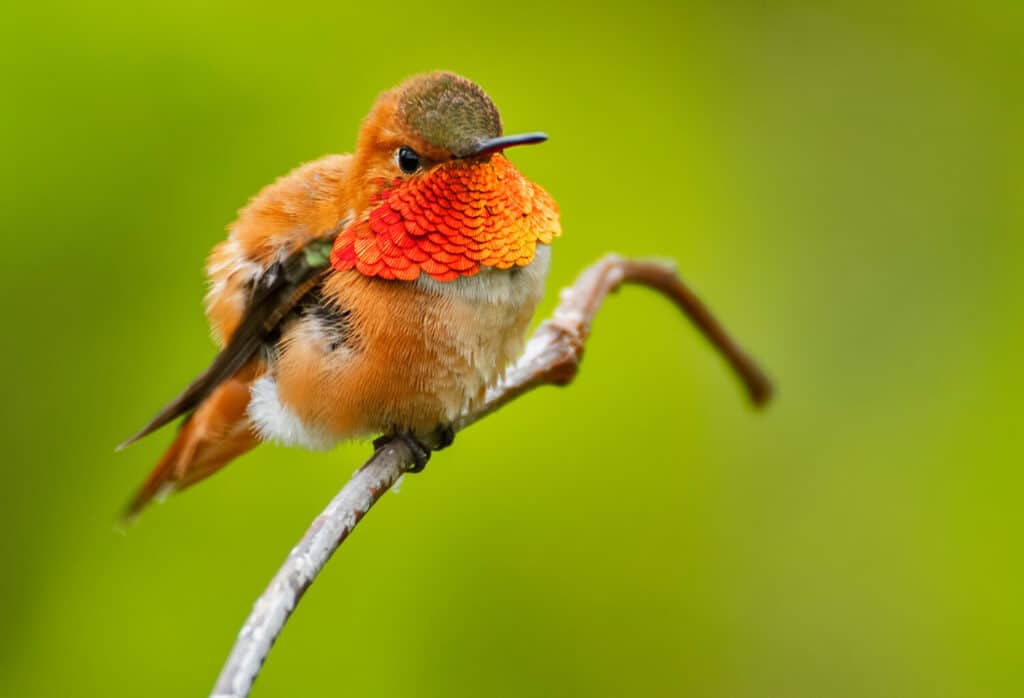
The rufous hummingbird is a long-distance migrant that breeds further north than any other hummingbird species, nesting as far north as southeastern Alaska.
©punkbirdr/Shutterstock.com
The rufous hummingbird (Selasphorus rufus) overwinters along the Gulf Coast in Texas, Louisiana, Mississippi, Georgia, and Florida. Additionally, some ruby-throated hummingbirds (Archilochus colubris) forgo the usual migration over the Gulf of Mexico and stay along the Gulf Coast for the winter.
South Florida
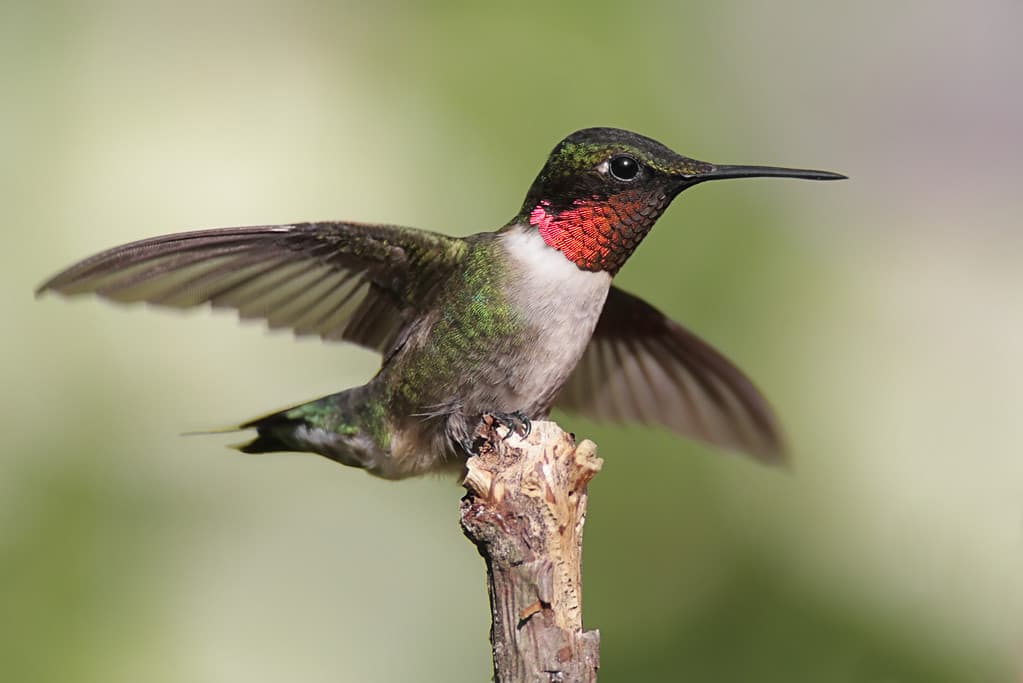
The
ruby-throated hummingbird
is the U.S. and Canada’s only established breeding hummingbird species east of the Rocky Mountains.
©Steve Byland/ via Getty Images
In addition to the ruby-throated hummingbirds noted above who stay along the Gulf Coast, even more overwinter in South Florida. Furthermore, their cousins who did migrate further south for the winter will start showing back up in the state in February as they make their journey north for the spring!
The U.S. Caribbean Islands
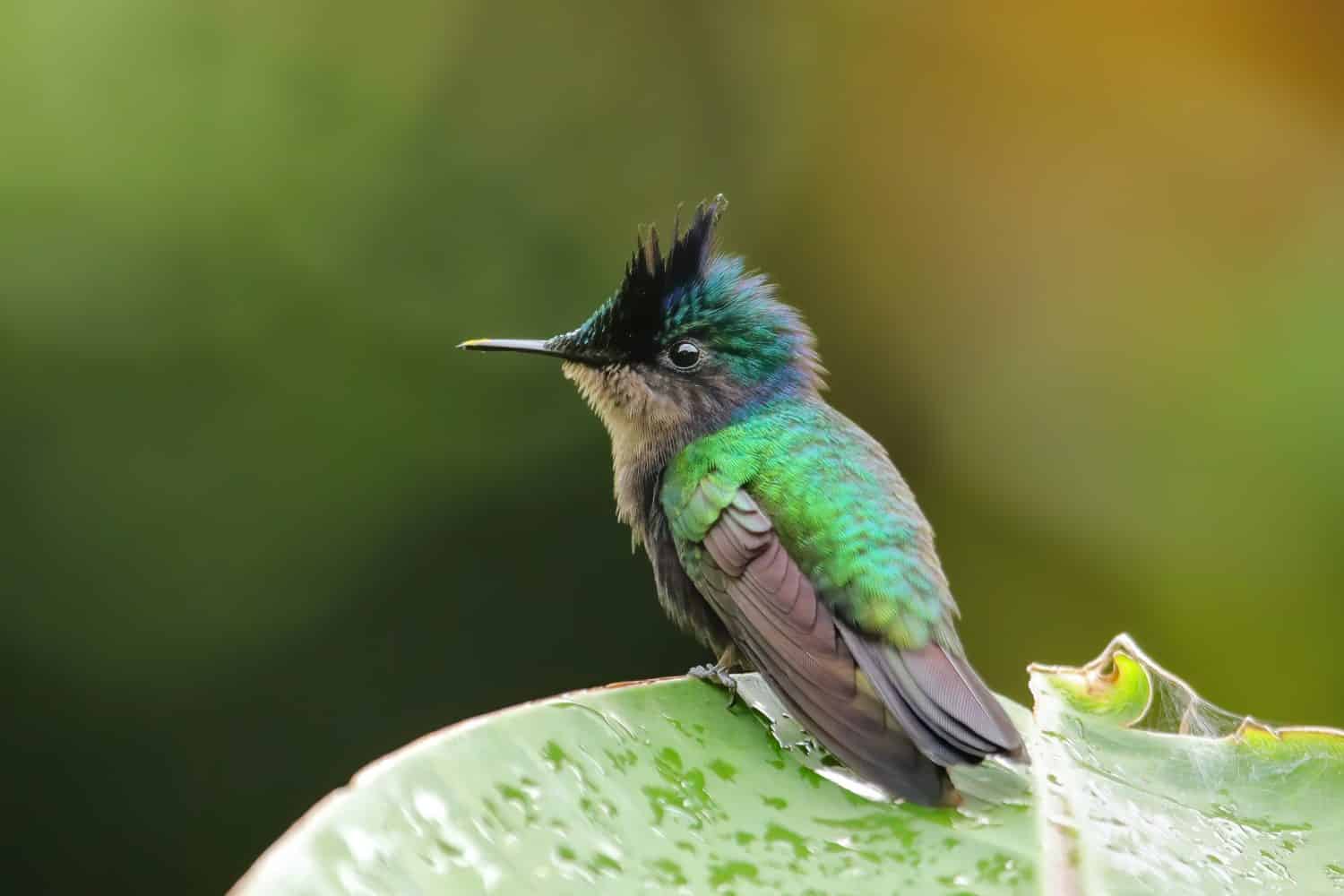
The Antillean crested hummingbird is native to the islands of the Caribbean.
©Don Mammoser/Shutterstock.com
Both Puerto Rico and the U.S. Virgin Islands have multiple hummingbird species that are year-round residents. These include the Antillean crested hummingbird (Orthorhyncus cristatus), Antillean mango (Anthracothorax dominicus), and green-throated Carib (Eulampis holosericeus). Puerto Rico also has two additional endemic species: the green mango (Anthracothorax viridis) and the Puerto Rican emerald (Chlorostilbon maugaeus).
What About the Rest of the United States?
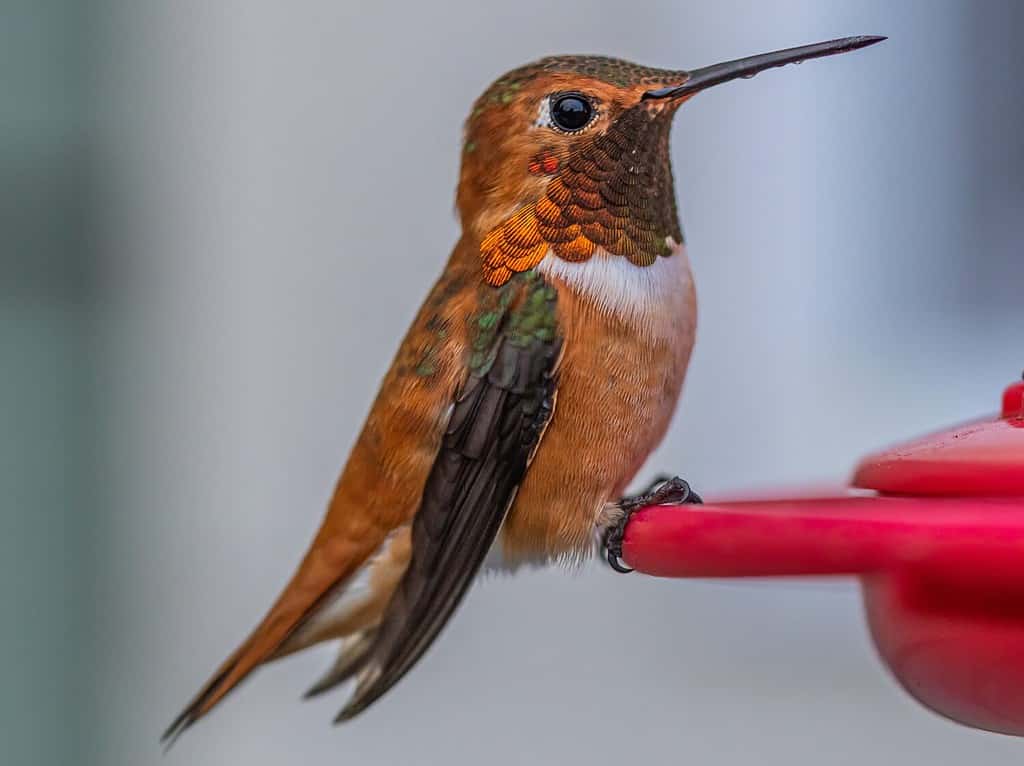
While the rufous hummingbird is native to western North America, it appears as a vagrant east of the Rockies more frequently than any of the other western species.
©Panduh Productions/Shutterstock.com
Although hummingbirds generally don’t reside year-round in most of the rest of the U.S., there is always the possibility of spotting one any time of the year, even in winter. Some may be individual birds who ended up not migrating with the rest of their species, while others may be vagrants who strayed outside of their species’ usual range. Climate change may also influence when, where, and if different hummingbird species migrate across North America. In tandem with milder winters, an increase in ornamental plantings and artificial hummingbird feeders could also be helping more hummingbirds stay put over winter.
Whether lingering strays, accidental visitors, or a part of broader shifting trends, “off-season” hummingbirds do appear annually further to the east and north than their usual ranges. If you are lucky enough to spot a rare winter hummingbird visitor near you, make sure to report the sighting!
Conclusion
Hummingbirds are found across the U.S., but in many areas, sightings are usually only during breeding and migration seasons. Regions of the U.S. where you are most likely to still see hummingbirds in February are the Pacific Coast states, the Southwest, the Gulf Coast, South Florida, and the U.S. Caribbean (Puerto Rico and the U.S. Virgin Islands). However, winter hummingbirds can potentially be spotted in other areas as well, as some individuals may not migrate or might stray outside their usual range. A combination of shifting climates and increased human assistance in the form of ornamental plants and artificial feeders could also be contributing to an increase in winter hummingbird sightings across the country.
The photo featured at the top of this post is © iStock.com/Devonyu
Thank you for reading! Have some feedback for us? Contact the AZ Animals editorial team.




